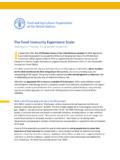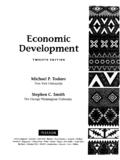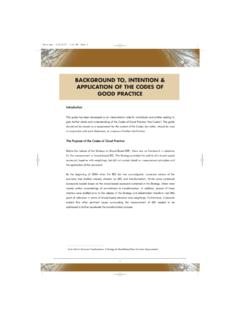Transcription of The Impact of Entrepreneurship on Economic Growth
1 1 The Impact of Entrepreneurship on Economic Growth Carreea,b,c, and Thurika,b aCentre for Advanced Small Business Economics (CASBEC) at Erasmus University Rotterdam bEIM Business and Policy Research, Zoetermeer cFaculty of Economics and Business Administration, University of Maastricht Chapter prepared for the International Handbook of Entrepreneurship Research, edited by Zoltan Acs and David Audretsch Correspondence: Version: July 2002. Abstract: The present chapter deals with the consequences of Entrepreneurship for macro- Economic Growth .
2 It consists of seven sections: 1. Introduction; 2. The influence of Economic de-velopment on Entrepreneurship ; 3. Types of Entrepreneurship and their relation to Economic Growth ; 4. The effects of the choice between Entrepreneurship and employment; 5. Entrepreneur-ship in endogenous Growth models; 6. Empirical evidence and 7. Future analysis and policy is-sues. Acknowledgement: The authors are grateful to Zoltan Acs, David Audretsch, Bruce Kirchhoff, Boris Lokshin and Andr van Stel for comments. The present chapter draws on a range of earlier research, viz.
3 Carree and Thurik (1999b), Carree, van Stel, Thurik and Wennekers (2002), Wennekers and Thurik (1999), Audretsch, Verheul, Thurik and Wennekers (2002) and Audretsch and Thurik (2000, 2001a and 2001b). Martin Carree is grateful to the Royal Netherlands Academy of Arts and Sciences (KNAW) for financial support. Finally, the present paper is part of the SNS project on Entrepreneurship and Growth financed by the Marcus and Marianne Wallenberg's Foundation. 21. Introduction The last two decades have witnessed a wealth of studies analyzing the determinants of entre-preneurship.
4 While some of these studies are theoretical ( Holmes and Schmitz, 1990), others are empirical ( Evans and Leighton, 1990). The consequences of Entrepreneurship , in terms of Economic performance, have also generated a extensive literature. However, this literature has generally been restricted to two units of observations that of the establishment or firm, and that of the region. Noticeably absent are studies linking the Impact of Entrepreneurship on perform-ance for the unit of observation of the country.
5 A large literature has emerged analyzing the im-pact of Entrepreneurship on Economic performance at the level of the firm or establishment. These studies typically measure Economic performance in terms of firm Growth and survival (Au-dretsch, 1995; Caves, 1998; Sutton, 1997). The compelling stylized facts that have emerged from this literature are that entrepreneurial activity, measured in terms of firm size and age, is positively related to New firms and (very) small firms grow systematically larger than large and established incumbents.
6 These findings hold across modern Western economies and across time periods. The link between Entrepreneurship and performance has also been extended beyond the unit of observation of the firm to include geographic regions. A small literature exists linking measures of entrepreneurial activity for regions to the Economic performance of those regions ( Audretsch and Fritsch, 2002; Acs and Armington, 2002). However, when it comes to linking Entrepreneurship to Growth at the national level, there is a relative void despite recent efforts of the Global Entrepreneurship Monitor (GEM) research pro-gram (Reynolds et al.)
7 , 2001). The purpose of this chapter is to provide a survey of what is known about the links between entrepreneurial activity and macro- Economic Growth . Despite the numer-ous studies linking Entrepreneurship to Economic Growth the relative void may be attributable to a paucity of theoretical frameworks linking Entrepreneurship to Growth as well as severe constraints in measuring Entrepreneurship in a cross-national context. Furthermore, there is the reversed causality of Economic development influencing entrepreneurial activities.
8 In this chapter we pro-vide five short overviews of the relevant literature and complement them with some new material. Explanations for Economic Growth have generally been restricted to the realm of macro-economics (Romer, 1990; Krugman, 1991). However, a different scholarly tradition linking Growth to industrial organization dates back at least to Schumpeter (1934). According to this tradition, performance, measured in terms of Economic Growth , is shaped by the degree to which the indus-try structure utilizes scarce resources most efficiently.
9 This (most efficient) industrial structure does not alter in case its underlying determinants are stable. However, as Chandler (1990), Scherer and Ross (1990) and Dosi (1988) emphasize, a change in the underlying determinants would be expected to result in a change in the industry structure most conducive to Growth . Cer-tainly, Chandler (1990) and Scherer and Ross (1990) identified a shift in industry structure to-wards increased centralization and concentration throughout the first two-thirds of the previous century as a result of changes in the underlying technology along with other factors.
10 More recently, a series of studies has identified a change in the determinants underlying the industry structure that has reversed this trend. The most salient point of this change is that tech-nological change, globalization, deregulation, shifts in the labor supply, variety in demand, and the resulting higher levels of uncertainty have rendered a shift in the industry structure away from greater concentration and centralization towards less concentration and decentralization. A series of empirical studies have uncovered two systematic findings regarding the response of industry structure to changes in the underlying determinants.







